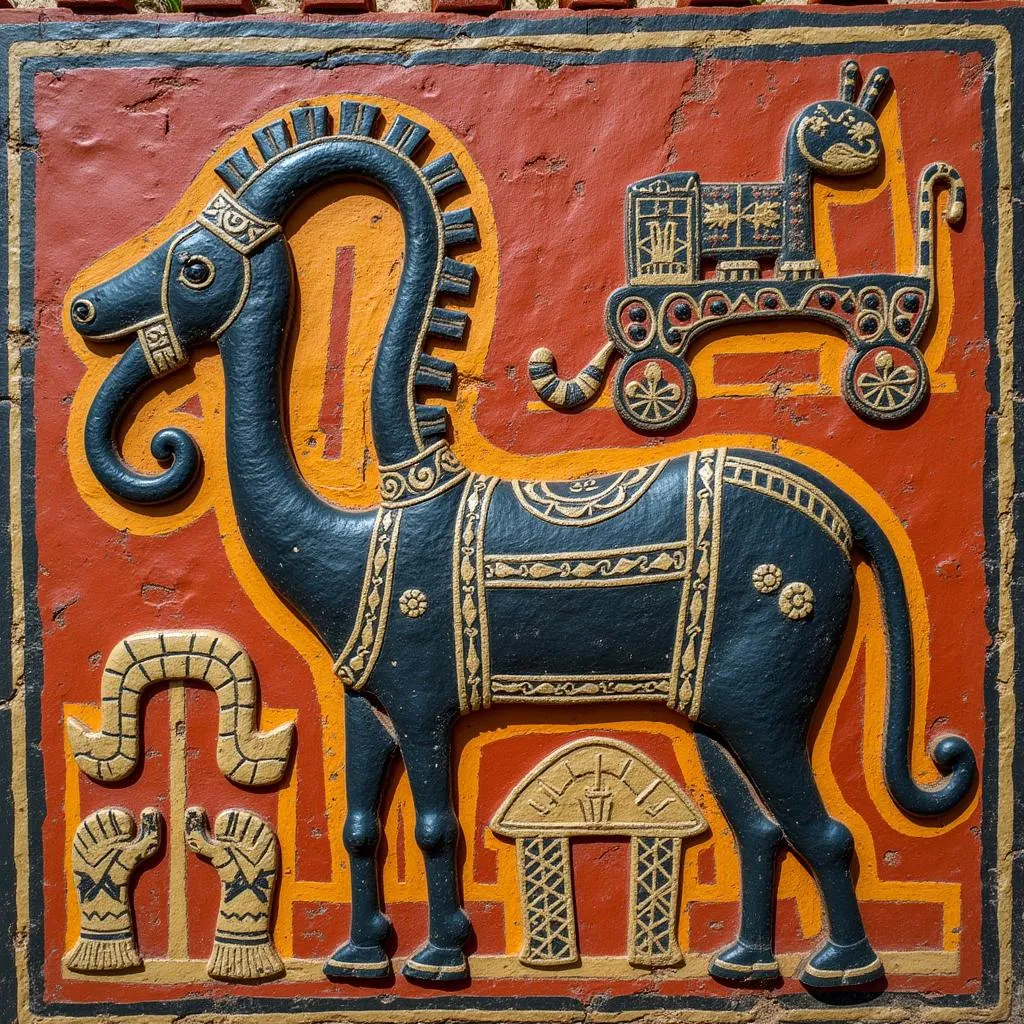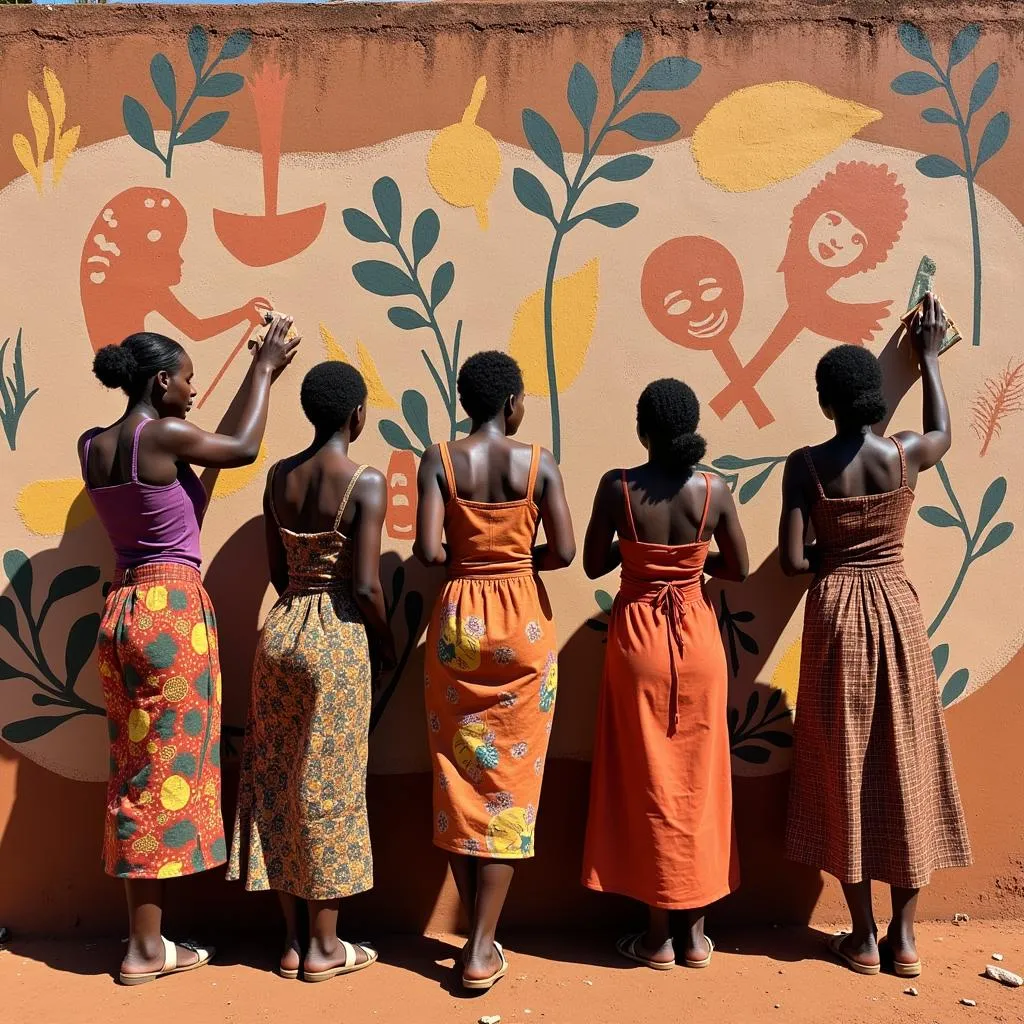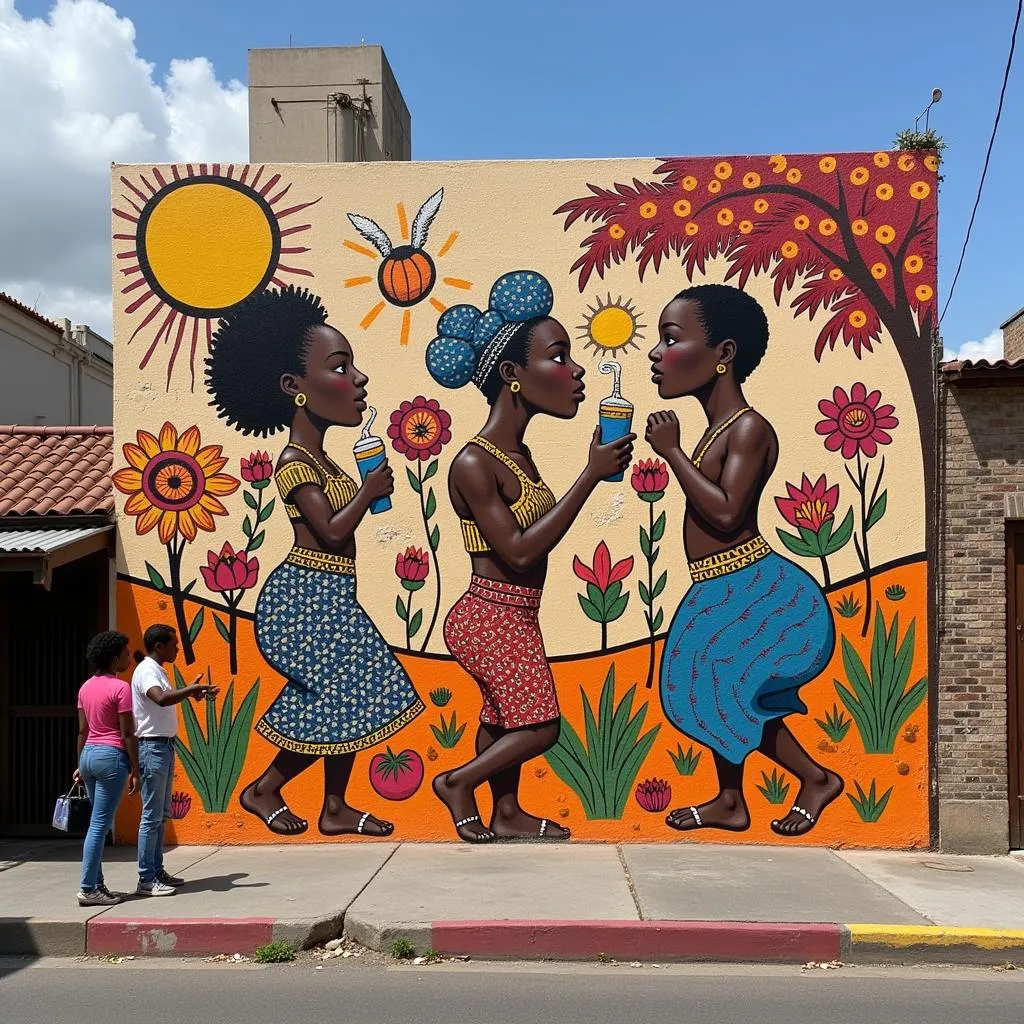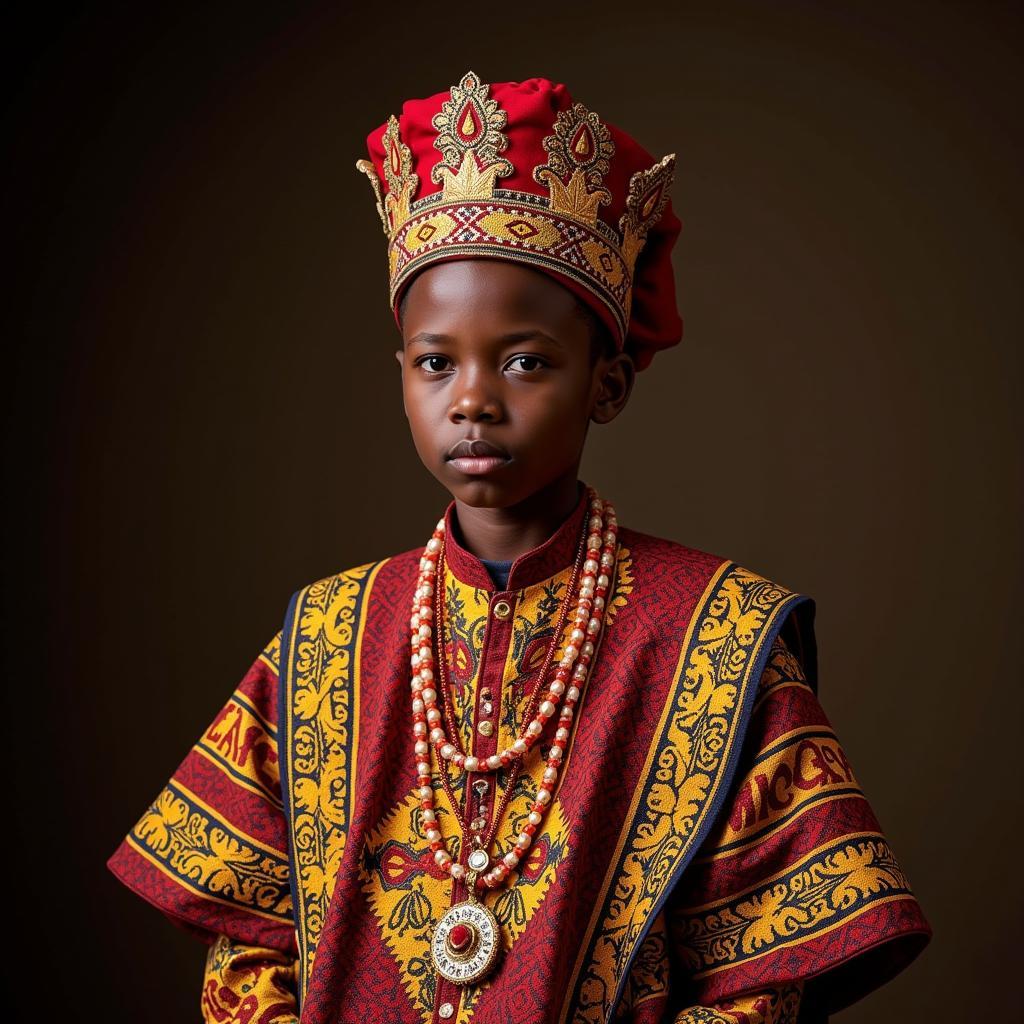The Enduring Beauty of African Clay Mural Art
African Clay Mural Art is a captivating testament to the continent’s rich artistic heritage and cultural depth. Far more than simple decoration, these murals serve as visual narratives, capturing the essence of daily life, spiritual beliefs, and ancestral wisdom. Using natural pigments and techniques passed down through generations, African artisans have transformed humble clay walls into breathtaking canvases of storytelling.
 African clay mural with intricate geometric patterns
African clay mural with intricate geometric patterns
A Legacy Etched in Earth
Across the diverse landscapes of Africa, from the Sahel to Southern Africa, evidence of this ancient art form can be found. Archaeological sites reveal remnants of clay murals dating back millennia, demonstrating the enduring nature of this tradition. While specific styles and motifs vary significantly across regions and ethnic groups, a common thread unites them: a deep connection to the earth and a celebration of cultural identity.
For example, the intricate murals adorning the mud-brick mosques of Mali, such as the Great Mosque of Djenné, are renowned worldwide. These geometric designs, often refreshed annually, are not merely decorative; they embody Islamic principles of unity and infinity. Similarly, the Ndebele people of South Africa are famed for their vibrantly colored homesteads, where bold geometric patterns created with natural pigments transform their homes into works of art.
The Language of Symbols and Stories
African clay mural art transcends mere aesthetics; it’s a language unto itself. The motifs employed – animals, ancestral figures, celestial bodies, and abstract designs – carry profound symbolic meaning, often rooted in mythology, cosmology, and social values.
 African women collaboratively creating a clay mural
African women collaboratively creating a clay mural
A recurring theme is the interconnectedness of life and the importance of community. Animals, often imbued with specific characteristics, might represent strength, cunning, or fertility. Ancestral figures connect the present to the past, honoring those who came before. Geometric patterns, far from random, can symbolize abstract concepts like balance, harmony, or the cyclical nature of life.
Living Traditions, Evolving Forms
While deeply rooted in tradition, African clay mural art is not static. Today, contemporary artists across the continent are reinterpreting and revitalizing this ancient art form, incorporating modern themes and materials while staying true to its core values.
From large-scale public installations to intimate interior designs, clay murals are experiencing a resurgence in popularity. This revival speaks to a growing global appreciation for handcrafted artistry and the enduring power of cultural heritage. Artists are experimenting with new techniques, blending traditional knowledge with contemporary influences to create innovative and thought-provoking works.
 A modern African clay mural in an urban setting
A modern African clay mural in an urban setting
Experiencing the Richness of African Clay Mural Art
Through their enduring beauty and powerful narratives, African clay murals offer a window into the soul of Africa. They remind us of the power of art to transcend time and connect us to the past, present, and future. To truly appreciate the richness of this art form, one must look beyond the surface and delve into the stories they tell – stories of community, resilience, and the enduring spirit of creativity.

